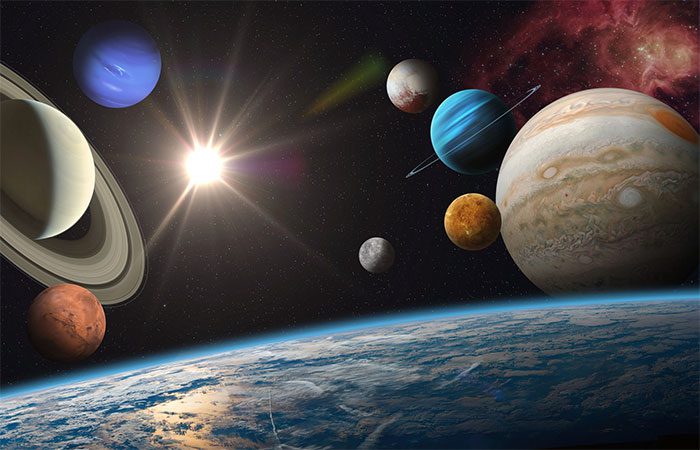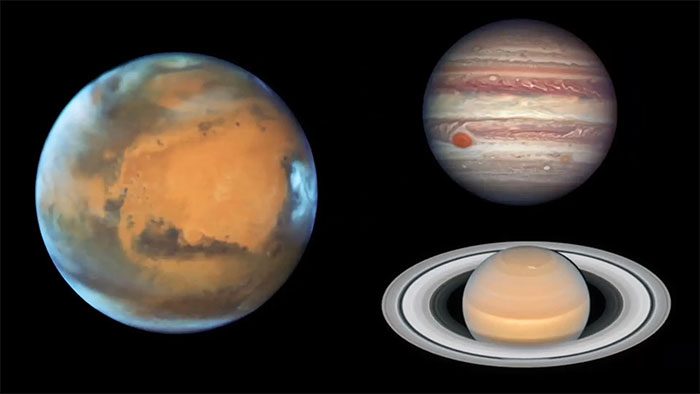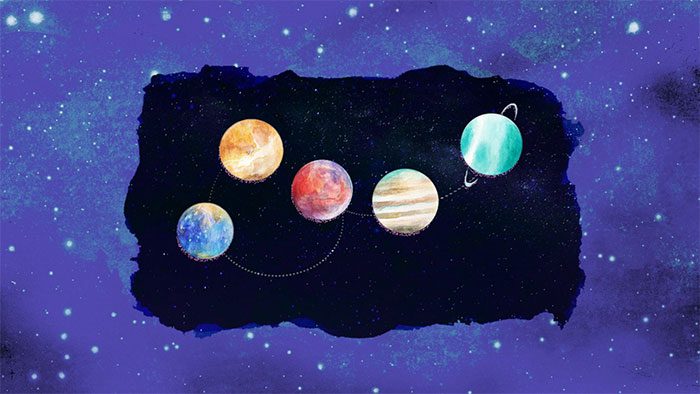Jupiter is the largest planet in the Solar System, with a mass 2.5 times that of all the other planets combined. The Sun accounts for 99.9% of the total mass of the Solar System. Therefore, if Mars and Jupiter were to swap places, it could disrupt the balance of the Solar System and potentially destroy all life on Earth.
The balance of the entire Solar System is a very delicate reality, as it directly relates to the gravitational forces between the planets. Swapping the orbits of two planets in the Solar System could disrupt this balance. So, how would Earth be affected if Mars and Jupiter suddenly exchanged their positions?
The Sun and Jupiter are the two largest objects in our Solar System. The gravitational forces of these gigantic entities affect each other’s movements, and they have a significant impact on the motion of all other planets, moons, and asteroids in our cosmic neighborhood.
Inside this asteroid belt lies the fourth planet from the Sun and our neighbor, Mars. The Red Planet is only 78 million kilometers away from Earth, which means it is closer to us than Jupiter by a factor of eight.
Jupiter is the fifth planet from the Sun, located about 778 million kilometers away from us. It is the immense gravitational force of this giant gas planet that creates the asteroid belt separating the inner and outer regions of the Solar System. So, if these two planets suddenly swapped orbits, would millions of rocky objects in the asteroid belt fly straight toward us?

Mars will experience stronger gravitational pull on the side facing Jupiter.
Let’s start by looking at how Mars would behave in this orbital switch. Now it would be stuck between the colossal gas giants, Jupiter and Saturn. This would put the Red Planet in an uncomfortable position, with the two largest planets in the Solar System on either side. The discomfort here essentially means that it would have to endure powerful gravitational effects from both of these gas giants.
However, the gravitational pull between these two planets is not uniform. And Mars would suffer a fate similar to that of Io—one of Jupiter’s moons. Like Io, Mars would experience stronger gravitational pull on the side facing Jupiter, causing it to be stretched and compressed simultaneously, which would lead to internal heating.
This is why Io has more volcanic eruptions and active volcanoes than any other place in the Solar System. If Mars were to swap places with Jupiter, the gravitational forces could be strong enough to reactivate some ancient volcanoes on the Red Planet—you could witness lava erupting from Olympus Mons, the largest volcano in the Solar System.

The gravitational force of Jupiter would affect Earth about 64 times stronger than it currently does from Mars.
Returning to our perspective in the asteroid belt, things would become interesting here on Earth. The first major change you would notice is that the night sky looks a bit different. Jupiter, which initially appears as a bright star in the distance, would now appear about 20% larger than the Moon. On a clear night, you might see its colorful bands and spots.
However, that’s just the appearance; when Mars and Jupiter switch orbits, the gravitational pull of Jupiter would affect Earth about 64 times stronger than it currently does from Mars. In fact, Jupiter has already been influencing us from afar. Every 405,000 years, its pull, along with that of Venus, causes droughts and heavy rains on our planet.
With such proximity, the aforementioned effects would surely be extreme. Stuck between the Sun and Jupiter, our planet would face catastrophic issues with tidal bulging. Thus, what you once knew as a lovely, habitable home would transform into a volcanic hell.
With Jupiter suddenly on the opposite side of the asteroid belt, all those millions of rocks would be drawn in new directions towards it. This would lead to many more celestial collisions with Earth.

Our planet would face catastrophic issues with tidal bulging.
The objects in the asteroid belt vary greatly in size. In terms of massive objects, there’s the dwarf planet Ceres, which is about 25% the size of our Moon. Among the asteroids, Vesta has a diameter of 530 kilometers. If these celestial bodies were to collide with Earth, it could lead to a mass extinction event for the entire planet.
A collision with celestial bodies the size of about 1 kilometer would have enough destructive power to bring an end to us. If an asteroid approximately 10 kilometers in diameter struck our planet, the Sun would be obscured by dust for a year or more.
Without sunlight, we would experience what is called a impact winter. Temperatures would drop, and photosynthesis would cease. All of this would lead to a mass extinction of plants, animals, and human life.


















































